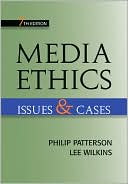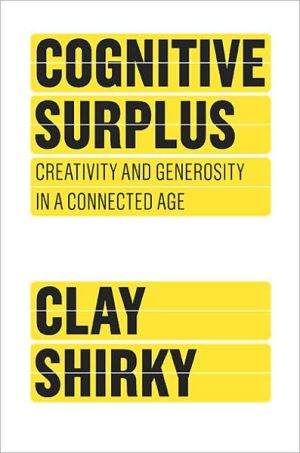Media Ethics: Issues and Cases
Search in google:
By combining real-life and hypothetical cases with a succinct introduction to ethical theory, Media Ethics: Issues and Cases helps students prepare for the ethical situations they will encounter in the media professions. Driven by case studies, this text is an ideal choice as the main text in a media ethics course or as a supplemental text in any course in journalism.
* indicates new to the 7th Edition.Chapter 1: An Introduction to Ethical Decision MakingChapter 1 Essay: Cases and Moral Systems, Deni Elliott*Chapter 1 Case Case 1-A: How to Read a Case Study, Philip PattersonChapter 2: Information Ethics: A Profession Seeks the TruthChapter 2 Cases:*Case 2-A: What's Yours is Mine: The Ethics of News Aggregation, Chad Painter *Case 2-B: Is It News Yet?, Michelle PeltierCase 2-C: Visualizing September 11th, Sara GettysCase 2-D: The Spouse is Squeezed: A South Carolina TV Reporter's Attempt To Conceal Her Source, Sonya Forte Duhe Case 2-E: When Is Objective Reporting Irresponsible Reporting?, Theodore GlasserCase 2-F, Monitoring The Monitor: Taste, Politics and an Explosive Photo, Gina BramucciChapter 3: Strategic Communication: Does Client Advocate Mean Consumer Adversary? Chapter 3 Cases:*Case 3-A: Corporate Responsibility: Just Sales or Doing Well by Doing Good?, Christine Lesicko*Case 3-B: Tailgate Approved? The Rise and Fall of the Fan Can, Erin SchausterCase 3-C: Taking It For a Spin: Accepting Product Samples in the Newsroom, Philip PattersonCase 3-D: Was That an Apple Computer I Just Saw? A Comparison of Product Placement in U.S. Network Television and Abroad, Philip Patterson Case 3-E: Breaking Through the Clutter: Ads That Make You Think Twice, Fritz Cropp IVCase 3-F: In The Eye of The Beholder: Dove's Campaign for Real Beauty, Brandi Herman-RoseCase 3-G: Quit, Blow the Whistle or Go With the Flow?, Robert D. Wakefield *Case 3-H: Getting The Story, Getting Arrested: Photojournalism and Activism, Lee Wilkins*Case 3-I: The New York Times Sudan "Advertorial": Blood Money or The Marketplace of Ideas?, Heather HollowayChapter 4: Loyalty: Choosing Between Competing AllegiancesChapter 4 Cases:*Case 4-A: Twitter Ethics for Journalists: Can You Scoop Yourself?, Charlotte BellisCase 4-B: Where Everybody Knows Your Name: Reporting and Relationships in a Small Market, Ginny WhitehouseCase 4-C: A Question of Role: Is a Documentary Filmmaker a Friend, a Journalist or an Entertainer?, Nancy Mitchell Case 4-D: Conflicted Interests, Contested Terrain: The New York Times Code of Ethics, Bonnie BrennenCase 4-E: Freebies and the Houston Rodeo, Jim MathenyCase 4-F: Can You Relate: Cross-Cultural Sensitivity and Reporting, Isabel OrdonezChapter 5: Privacy: Looking for Solitude in the Global VillageChapter 5 Cases:Case 5-A: Funeral Photos of Fallen Soldiers: Public Interest or Public Outrage?, Penny CockerellCase 5-B: A Person of Interest, Cara DeMicheleCase 5-C: Blind Justice? On Naming Kobe Bryant's Accuser After the Rape Charge is Dropped, Patrick Lee Plaisance*Case 5-D: Children Privacy and Framing: The Use of Children's Images in an Anti-Same-Sex Marriage Ad, Yang LiuChapter 6: Mass Media in a Democratic Society: Keeping a PromiseChapter 6 Cases:*Case 6-A: Cable News: 24/7 Political Speech or Something Else?, Su JingCase 6-B: Victims and The Press, Robert LoganCase 6-C: Painful Images of War: Too painful For Whom? When?, Beverly HorvitCase 6-D: For God and Country: The Media and National Security, Jeremy Littau and Mark SlagleCase 6-E: Mayor Jim West's Computer, Ginny Whitehouse*Case 6-F: Journalists or Jokesters: The Pimp, The Prostitute and an ACORN That Fell Away From The Tree, Philip PattersonChapter 7: Media Economics: The Deadline Meets the Bottom LineChapter 7 Cases:Case 7-A: Crossing The Line? The L.A. Times and the Staples Affair, Meredith Bradford and Philip PattersonCase 7-B: Profit Versus News: The Case of the L.A. Times and the Tribune Company, Lee WilkinsCase 7-C: "Bonding" Announcements in the News, Joann ByrdCase 7-D: Punishing the Messenger: The Tobacco Industry and the Press, Steve Weinberg*Case 7-E: Is It News Yet?, Michelle Peltier*Case 7-F: Paying the (Newspaper) Bills, Ivy AsheChapter 8: Picture This: The Ethics of Photo and Video JournalismChapter 8 Cases:Case 8-A: Daniel Pearl and the Boston Phoenix: Too Much of a Bad Thing?, Timothy RagonesCase 8-B: Problem Photos and Public Outcry, Jon RoosenraadCase 8-C: Manipulating Photos: Is It Ever Justified?, Lee WilkinsCase 8-D: "Above the Fold": Balancing Newsworthy Photos with Community Standards, Jim Godbold and Janelle HartmanCase 8-E: Horror in Soweto, Sue O'BrienCase 8-F: Death in Print: Publication of Hurricane Katrina Photographs, Abigail M. Pheiffer*Case 8-G: Digital Manipulation as Deceit? A Case Study of a Redbook Magazine Cover, Elizabeth HendricksonChapter 9: New Media: Continuing Questions and New RolesChapter 9 Cases:Case 9-A: Ethics on the Internet: Abiding By the Rules of the Road on the Information Superhighway, Bruce LewensteinCase 9-B: What Were You Linking?, Paul Voakes Case 9-C: The Information Sleazeway: Robust Comment Meets the Data Robots, Fred VulteeCase 9-D: Death Underneath the Media Radar: The Anuak Genocide in Ethiopia, Doug McGill*Case 9-E: Ownership of Information in a Digital Age: Problems and Possibilities, Lee Wilkins*Case 9-F: Sending the Wrong Information About Doing the Right Thing, Naomi Weisbrook*Case 9-G: Looking for Truth Behind the Wal-Mart Blogs, Philip Patterson*Case 9-H: Twitter Ethics for Journalists: Can You Scoop Yourself?, Charlotte BellisChapter 10: The Ethical Dimensions of Art and EntertainmentChapter 10 Cases:*Case 10-A: When Radio Comedy Crosses the Line: Trouble at the BBC, Brian Simmons*Case 10-B: Hardly Art, Mito Habe-EvansCase 10-C: "Schindler's List": The Role of Memory, Lee WilkinsCase 10-D: Naomi Campbell: Do Celebrities Have Privacy?, Lee WilkinsCase 10-E: Hate Radio: The Outer Limits of Tasteful Broadcasting, Brian SimmonsCase 10-F: Do You Really Want to Hurt Me? Michael Reidel and Theater Criticism, Brian M. VandevenderChapter 11: Becoming a Moral Adult








